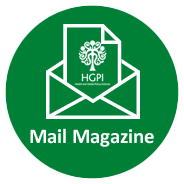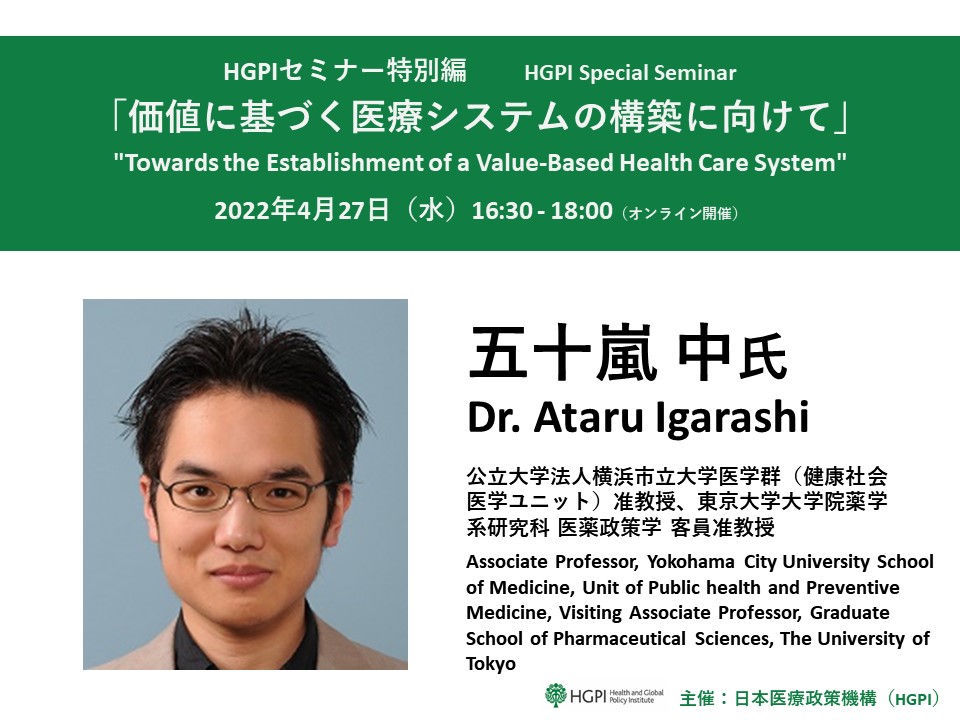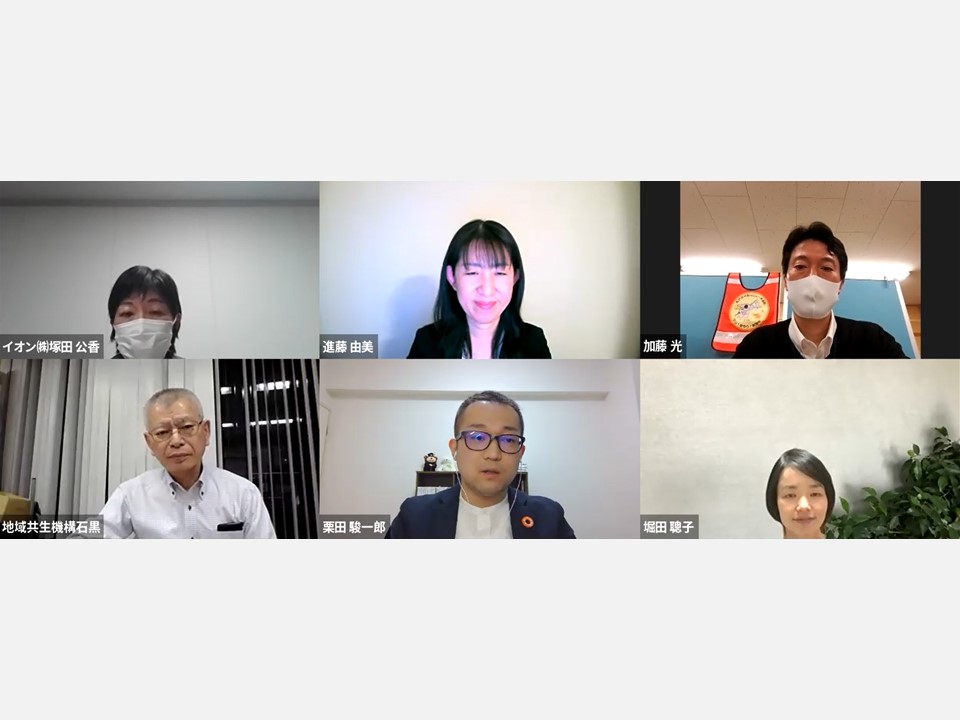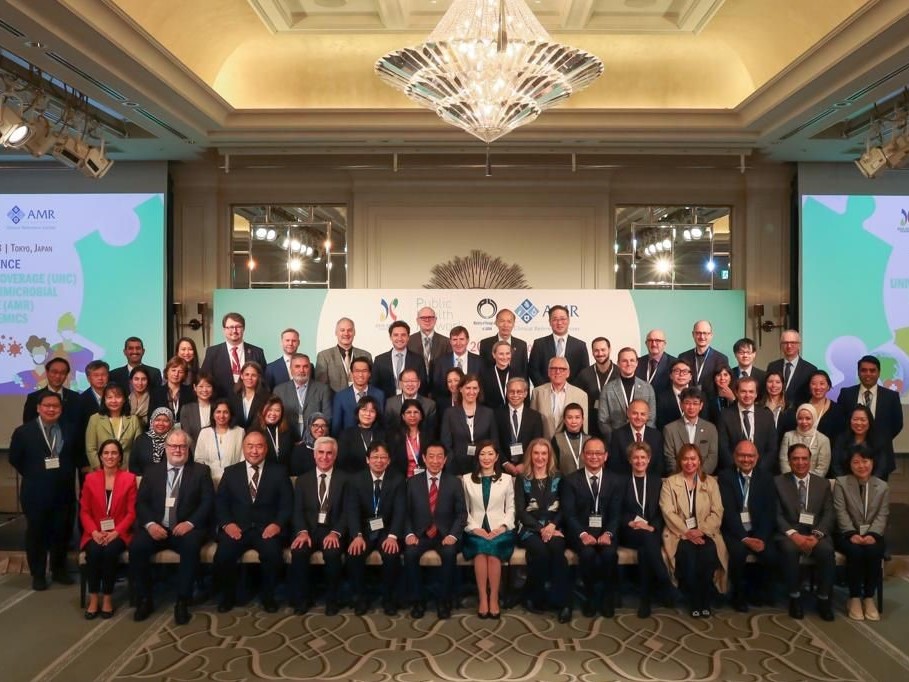[Event Report] HGPI Special Seminar – Universal Health Coverage in an Era of Antimicrobial Resistance (August 18, 2022)
date : 3/9/2023
Tags: AMR, Global Health, HGPI Seminar
![[Event Report] HGPI Special Seminar – Universal Health Coverage in an Era of Antimicrobial Resistance (August 18, 2022)](https://hgpi.org/en/wp-content/uploads/sites/2/uhc-shs-20220818-1-top_JPNENG.jpg)
For this HGPI Seminar, we hosted two guest speakers who discussed the relationships among Universal Health Coverage (UHC), Global Health Security (GHS), and Antimicrobial Resistance (AMR).
This webinar was co-hosted by Health and Global Policy Institute (HGPI), AMR Alliance Japan, and the Asia-Europe Foundation (ASEF).
Key points of the lectures
- In 2019 alone, AMR was the direct cause of 1.27 million global deaths, and this number increases to approximately 4.95 million deaths when including those associated with AMR. AMR affects all countries, despite the degree to which they have achieved UHC or the maturity of their healthcare systems. This means global cooperation will be necessary to combat AMR.
- The COVID-19 pandemic revealed that robust healthcare systems and UHC are crucial for ensuring and maintaining health security and equity. Perspectives on AMR control should be included in discussions regarding how to best structure international cooperation for achieving health security.
- International coordination is important for AMR control. However, there is no guarantee that a system which works effectively in one country will be ideal for other countries. While sharing good examples, we should implement designs that respect each country’s health system as we move forward.
- When introducing pull incentives as a form of AMR control, the aim should be to provide incentives while maintaining stewardship.
- After the Global Action Plan on AMR was adopted during the May 2015 World Health Assembly, Japan enacted a five-year plan that set numerical targets called the National Action Plan on Antimicrobial Resistance (NAP) in April 2016. Every year, assessments are being conducted at conferences involving related ministries as well as in the Nippon AMR One Health Report (NAOR) to track progress on those targets. Efforts to revise the NAP for the next target period will be completed by March 2023.
- Expectations are high for AMR to be a key agenda item at the G7 Hiroshima Summit in 2023.
■ Opening remarks from Ambassador Toru Morikawa
Recent studies have reported that in 2019, AMR was the direct cause of about 1.27 million global deaths and was associated with an estimated 4.95 million global deaths. AMR is a threat to all people. For example, one in five deaths caused by AMR is among children age five years and younger. To better understand the magnitude of AMR’s mortality impact, in 2019, HIV/AIDS caused 860,000 deaths while malaria caused 640,000 deaths, thus making AMR an even greater global public health threat. According to a report from the World Health Organization (WHO), COVID-19 has resulted in 6.5 million deaths over the past two years since its initial outbreak. AMR is indeed a pandemic comparable to the COVID-19 one and immediate action is necessary.
In 2018, the Asia-Europe Foundation Public Health Network (ASEF PHN) highlighted the connection between UHC and AMR at its 10th anniversary event co-hosted with Japan’s Ministry of Foreign Affairs. The conference pointed out the fact that AMR has placed the sustainability of health systems in a precarious position. This is because healthcare systems in many countries around the world were built with the assumption that effective, affordable antimicrobials would always be readily available. However, AMR’s spread means that antimicrobial effectiveness can no longer be ensured.
Taking healthcare expenditures and productivity losses into account, AMR is estimated to cost the European Union 1.5 billion euros annually. The expanded access to antibiotics enable by UHC has been identified as a factor that may increase the risk of AMR if no action is taken to encourage antimicrobial stewardship. It is also estimated that if no measures are taken to combat AMR, annual global deaths due to AMR will increase to 10 million by the year 2050, which is higher than the number of deaths caused by cancer, with the annual global GDP contracting by 3.8%.
The fight against AMR requires global cooperation. While discussions on how to best structure international cooperation to achieve UHC and health security have already begun, based on the lessons we have learned from the COVID-19 pandemic, strategies for tackling AMR should also be included in these ongoing discussions.
■ Opening remarks from Ms. Riko Kimoto
The COVID-19 pandemic highlighted just how important it is to have robust healthcare systems and UHC to ensure and maintain health security and fairness.
Recognizing this, the Asia-Europe Foundation (ASEF) plans to host a follow-up event to its 2018 UHC and AMR conference titled “UHC in an Era of AMR and Pandemics”. It is set to take place in February 2023 and will consist of four themes.
The first theme will be “UHC and AMR.” Based on the outcomes of the 2018 conference, experts on AMR and health systems will come together to further broaden discussions on aspects of the health system that require improvement for effective AMR control. The second theme will be on “Conducting R&D and commercializing antimicrobials.” This discussion will examine how health insurance systems can best support sustainable antimicrobial research and development. To prepare for that discussion, ASEF PHN plans to hold a panel session and roundtable at the World AMR Congress in Washington, D.C. in September 2022. The third theme will be, “UHC, AMR, and GHS.” We will discuss the importance of advancing AMR control grounded in UHC as a part of pandemic preparedness and response. The global agreement called the “Pandemic Treaty” currently being discussed should include AMR prevention, preparedness, and response. We believe that AMR mitigation will be useful for building a UHC that is sustainable, which in turn will help us be better prepared for future pandemics. Accordingly, investing in AMR preparedness through health systems is the same as investing in national security and GHS. The fourth theme of the 2023 follow-up conference will be “The role of international and cross-sectoral cooperation.” While ensuring that each country to have ownership of their health systems, international collaboration will be necessary for a sustainable and secure future. Through this event, ASEF hopes to support the efforts to build a sustainable UHC while promoting effective international cooperation against AMR to achieve better global health and health security.
■ Dr. Nick Crabb: The Health System and AMR Subscription Model in the U.K.
The clinical background of AMR and need for AMR control – How the market has failed for antimicrobials
AMR is one of the most pressing global issues of the century. Despite efforts to decrease antimicrobial usage in the U.K., from 2013 to 2017, there was a 35% increase in human AMR bloodstream infections.
There are few cases in which multiple antimicrobials are effective for the same pathogen, or in which work is being done on new antimicrobials that target a pathogen already targeted by existing drugs. There are even fewer such cases for antimicrobials targeting priority pathogens. From the perspective of stewardship, we must strictly limit the use of antimicrobials that are effective for priority pathogens. However, if there are no outbreaks of AMR infections, or if the sales of antimicrobials are restricted over long periods, then sales will be minimal. From the outset, regardless of outbreak frequency, proper stewardship can mean it will take many years after a patent has already expired for the sales of an antimicrobial to reach the level at which manufacturers can expect profits. From a business standpoint, this makes it difficult for manufacturers to recover initial investments. It is safe to say, in terms of market structure, the antimicrobial market is a failure.
Using new antimicrobials as alternatives to existing ones leads to a cyclical form of stewardship that helps preserve existing antimicrobials, so new antimicrobials are inherently of great value. However, new antimicrobials are relatively expensive compared to existing antimicrobials, including generics, so people tend to avoid using them. This further reduces the appeal of new antimicrobial development and makes the current state of market failure more difficult to escape.
The steps that led to launch of the pilot subscription model
To address the challenges in the antimicrobial market, the U.K. launched a public-private working group on AMR in 2015. Subgroups focusing on reimbursement and antimicrobial evaluation were also established. Early on in discussions, there was broad consensus toward the idea of introducing an innovative payment model called a subscription as a pull incentive.
However, it has been difficult to grasp the total situation when attempting to evaluate antimicrobials. To help with this, the Policy Research Unit in Economic Methods of Evaluation in Health & Social Care Interventions (EEPRU) of the Department of Health and Social Care (DHSC) was charged with exploring methods of evaluating antimicrobials in 2017. EEPRU published a report in 2018 titled, “De-linking reimbursement of antimicrobials from volumes sold: assessing alternative arrangements and implications for NICE appraisal.” In 2019, the DHSC formulated the “UK 5-year action plan for antimicrobial resistance 2019 to 2024” and a new subscription model based on anticipating the value of antimicrobials in terms of public health was implemented as a pilot program.
To advance the project and begin the pilot subscription model, in 2019, conversations were held with stakeholders, business and evaluation frameworks were examined, and a contract format was designed. Then, in 2020, we opened a call for proposals and selected two antimicrobials for evaluation and payment. Evaluations were completed in April 2022 and subscription style payment contracts were implemented on July 1, 2022. Completion of this pilot means we have successfully developed and implemented an innovative payment model that is based on the value generated for the U.K.’s National Health Service (NHS) when reimbursing companies. We have achieved a major objective.
Another key objective of the pilot was to provide incentives while encouraging stewardship. While payments made according to the value of antimicrobials served as a pull incentive for companies to pursue antimicrobial R&D and marketing, we needed to incorporate elements into the system to prevent companies from overusing (overselling) antimicrobials beyond the scope of proper stewardship. To do so, we developed high-level guidelines for responsible stewardship and provided them to companies and other parties from the start of the pilot. For example, for ceftazidime/avibactam, clinicians should heed the advice of specialists in microbiology or infectious disease and administer it only when almost no alternative treatments are available. So, the guidelines also specify to only use ceftazidime/avibactam when susceptibility can be confirmed through microbiological or genetic susceptibility testing, or when treatment is urgent for an infection that is considered likely to be susceptible.
The results of the pilot subscription model and future prospects
The successes and failures of the pilot can be put in terms of three perspectives. The first is whether or not consensus was reached on the evaluations based on the framework of Health Technology Assessment (HTA). The second is whether or not we were able to create a payment model framework that encouraged stewardship. The third was if other countries besides the U.K. began to consider introducing pull incentives for antimicrobials to stimulate investments from industry.
While we achieved a certain degree of success for all of these objectives, the backdrop to this is the fact that AMR is an urgent global issue both in clinical medicine and for public health. This facilitated better understanding among more people toward the need to implement pull incentives for antimicrobials. We must also not overlook the excellent leadership demonstrated by the DHSC and the government. In addition to strong leadership, another significant factor was that we had effective collaboration across many agencies including the National Institute for Health and Care Excellence (NICE) and the NHS.
In the future, I believe it will be essential to implement pull incentives on a global level. The principals of the subscription model introduced in the U.K. are widely applicable, but evaluating antimicrobials in a quantitative manner based on health economics is incredibly complex, so we must keep in mind that routinely applying quantitative health economics may not necessarily be the best approach. In the UK we are working to modify and simplify our evaluation framework based on the learning from the pilots.
■ Dr. Eiji Hinoshita: The National Action Plan on Antimicrobial Resistance and Asia-Pacific Collaboration
Trends related to AMR in international society
The Global Action Plan on AMR was adopted at the World Health Assembly in May 2015 and charged each signatory to formulate its own national action plan on AMR within two years.
The following month, AMR was a priority topic at the G7 Summit at Schloss Elmau in Germany. While welcoming the formulation of the WHO global action plan, that meeting also discussed the need for R&D on novel pharmaceuticals and other innovations to reinforce the One Health Approach. The following year, in 2016, the G7 Ise-Shima Summit was held in Japan, and the G7 Ise-Shima Vision for Global Health mentioned strengthening actions to combat AMR and promote R&D in this area. At later meetings of the G7, in addition to the Health Ministers’ Meetings, AMR continued to be a priority topic at other meetings like the Leaders’ Meetings and Finance Ministers’ Meetings.
The National Action Plan on Antimicrobial Resistance (NAP)
As AMR control grows more important around the world, Japan established the National Action Plan on Antimicrobial Resistance (NAP) at a ministerial conference and formulated initiatives to be undertaken over the five years from 2016 to 2020.
The NAP comprises six main pillars: 1) Awareness raising and education; 2) Trend surveys and surveillance; 3) Infection prevention and control; 4) Antimicrobial stewardship; 5) R&D and drug discovery; and 6) International cooperation. It also sets objectives for each of these pillars as well as strategies and initiatives for achieving them.
The NAP also includes numerical targets. Specifically, for people, it aims to maintain or reduce resistance rates of AMR bacteria such as Streptococcus pneumoniae and Escherichia coli to 0.2% to 25% or less and to reduce the volume of antimicrobial used to two-thirds of 2013 levels by 2020, five years later. For animals, it aims to meet G7 member standards for three classes of antimicrobials that target E. coli.
Regarding specific measures for “continuous trend surveys and surveillance,” a survey called the Nippon AMR One Health Report (NAOR) has been conducted every year since 2017. Conducting the trend survey is a key strategy for advancing measures appropriately. Regarding “antimicrobial stewardship,” the “Manual of Antimicrobial Stewardship” and a summary version of that manual were created and efforts to disseminate them in clinical settings are now being made. As one effort being made for “R&D and drug discovery,” the results of whole genome analyses of strains of Carbapenem-resistant Enterobacteriaceae (CRE) collected in Thailand and Myanmar are being compared with genomic data from various other countries in an effort to analyze their global spread. This initiative has resulted in the identification of multiple novel mechanisms by which carbapenem resistance increases in CRE. In “international cooperation,” we hosted the Tokyo AMR One-Health Conference. At that conference, I served as a member of the R&D working group alongside experts in this field from various Asia-Pacific countries. Together, we shared information on outbreaks of AMR and trends in research and exchanged opinions on issues that require attention. Furthermore, starting in FY2020, the Ministry of Health, Labour and Welfare (MHLW) has been a supporter of the Global Antibiotic Research and Development Partnership (GARDP) by providing funds for R&D on antimicrobials.
Collaboration in the Asia-Pacific region
The Tokyo AMR One-Health Conference is an initiative to combat AMR through international cooperation centered on the Asia-Pacific region. This conference is the successor to the Asia AMR Tokyo Ministerial Conference that was held in April 2016 that resulted in the establishment of the Asia-Pacific One Health Initiative on AMR (ASPIRE). ASPIRE aims to identify and address AMR-related challenges through joint action in the Asia-Pacific region. The four main areas of ASPIRE activities are: surveillance systems and laboratory networks, health management, antimicrobial access and regulation, and R&D.
Working groups for these four areas were established at the Tokyo AMR One-Health Conference held in February 2022. Japan chairs the working groups on surveillance systems and laboratory networks and on healthcare management. In the future, Japan will contribute to AMR control in the Asia-Pacific region by establishing a system for AMR surveillance in Asia called the Asian Antimicrobial Resistance Network (ASIARS-Net), preparing guidance on risk assessment for healthcare-associated infections, preparing a multi-lingual translation of Japan’s “Manual of Antimicrobial Stewardship,” and implementing genomic surveillance in each country in Asia.
The future of AMR control
Ministerial conferences are held annually to evaluate progress on the objectives and indicators in Japan’s NAP, while numerical targets are assessed in the NAOR. While there has been improvement in certain indicators like carbapenem resistance in E. coli, many indicators will require further efforts. I believe we must take continuous action based on international trends.
While taking these evaluation results into account, efforts to formulate the Next NAP by the end of this fiscal year are now advancing. As part of those efforts, we will also consider how to promote a research system that can evaluate AMR risks in humans, animals, and the environment in a cross-cutting manner, through both international collaboration and collaboration across industry, Government, and academia.
International cooperation will be essential to combat AMR. AMR was one of the three main agenda items at this year’s G7 Health Ministers’ Meeting in Germany. Currently, as of August 2022, the MHLW is considering which items to include on the main agenda for the health sector in preparation for next year’s G7 Summit. It will be crucial that we make every effort to ensure the silent pandemic of AMR does not result in severe public health problems in the future. I would like for Japan to continue contributing to global AMR control while sharing our experiences with all countries, including those in the Asia-Pacific region.
■ Closing remarks from Kiyoshi Kurokawa
Infectious disease pandemics occur once every 100 years, but during the COVID-19 pandemic, vaccines were developed with unprecedented speed. This rapid vaccine development was made possible by vast amounts of information being accumulated in the past. AMR is called a silent pandemic, but as pointed out by Professor Dame Sally Davies, promoting antimicrobial stewardship will help us reduce the damage done by AMR in the future. We believe it will be important to continue disseminating useful information that has accumulated through HGPI.
A lively discussion took place during the Q&A session. To promote UHC while advancing measures for AMR control, we recognized the importance of informing the public of the impact of failure to take action for AMR control and of communicating the need to invest in AMR control. Domestic issues in AMR control that were mentioned included rising fluoroquinolone resistance in E. coli and introducing pull incentives for new antimicrobials. Participants also recognized that interest in AMR is extremely high among G7 members, as are expectations for AMR to be included as a priority item in the agenda for the 2023 G7 Hiroshima Summit.
[Overview]
- Date & Time: Thursday, August 18, 2022, 18:00-19:30 (Tokyo) / 17:00-18:30 (Singapore) / 10:00-11:30 (London)
- Format: Zoom Webinar
- Participation fee: Free
- Language: English (simultaneous interpretation to Japanese will be provided)
- Hosted by: Health and Global Policy Institute (HGPI), AMR Alliance Japan, Asia-Europe Foundation (ASEF)
[Program] JST (titles omitted)
18:00-18:05 – Welcome and Introduction
- Yui Kohno (Manager, Health and Global Policy Institute (HGPI))
18:05-18:10 – Opening Remarks
- Toru Morikawa (Executive Director, Asia-Europe Foundation (ASEF))
18:10-18:20 – Introductory Comments
- Riko Kimoto (Manager for International Public Health, Governance & Sustainable Development Department, Asia-Europe Foundation (ASEF))
18:20-18:40 – Presentation (Tentative): Health System and AMR Subscription Model in the UK
- Nick Crabb (Programme Director – Scientific Affairs, National Institute for Health and Care Excellence (NICE))
18:40-19:00 – Presentation (Tentative): AMR NAP and Asian Pacific Collaboration
- Eiji Hinoshita (Assistant Minister for Global Health and Welfare, Ministry of Health, Labour and Welfare)
19:00–19:25 – Q&A Moderated by HGPI
19:25–19:30 – Closing Remarks
- Kiyoshi Kurokawa (Chairman, Health and Global Policy Institute)
[Profile]
Toru Morikawa (H.E. Ambassador, Executive Director, Asia Europe Foundation (ASEF)
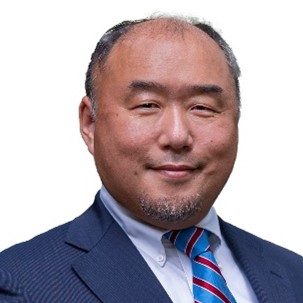 Ambassador MORIKAWA Toru (Japan) joined the Asia-Europe Foundation (ASEF) as its 8th Executive Director in August 2020. ASEF’s leadership alternates between Asia and Europe every four years. Ambassador MORIKAWA is a seasoned career diplomat bringing decades of experience and expertise to ASEF. His previous postings include serving as Minister, Deputy Head of Mission, Embassy of Japan in Iran; and Minister-Counsellor, Embassy of Japan in France where he was in charge of various cultural exchange initiatives. He has also worked in the areas of Media and Regional Economic Cooperation and has experience in cultivating and enhancing partnerships for projects with different organisations including the private sector. Ambassador MORIKAWA received his Bachelor’s Degree in Law from the University of Tokyo. He is fluent in Japanese, French, and English. He is married with two children.
Ambassador MORIKAWA Toru (Japan) joined the Asia-Europe Foundation (ASEF) as its 8th Executive Director in August 2020. ASEF’s leadership alternates between Asia and Europe every four years. Ambassador MORIKAWA is a seasoned career diplomat bringing decades of experience and expertise to ASEF. His previous postings include serving as Minister, Deputy Head of Mission, Embassy of Japan in Iran; and Minister-Counsellor, Embassy of Japan in France where he was in charge of various cultural exchange initiatives. He has also worked in the areas of Media and Regional Economic Cooperation and has experience in cultivating and enhancing partnerships for projects with different organisations including the private sector. Ambassador MORIKAWA received his Bachelor’s Degree in Law from the University of Tokyo. He is fluent in Japanese, French, and English. He is married with two children.
Eiji Hinoshita (Assistant Minister for Global Health and Welfare, Ministry of Health, Labour and Welfare)
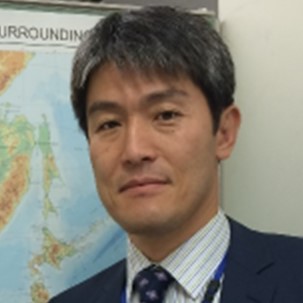 After graduating from Kyushu University, Faculty of Medicine, he joined the Department of Surgery II, Kyushu University. After getting Ph.D. degree at Kyushu University in 2000, he served as an Assistant Professor of Kyushu University in 2001. After joining in the Ministry of Health, Labour and Welfare in 2001, he served as Deputy Director-General of the Department of Welfare and Health, Niigata Prefectural Government, Director of the Office of International Food Safety, Councilor of the Permanent Mission of Japan to the United Nations in New York, Director of the Office of International Cooperation, Director of the Global Health Policy Division, Ministry of Foreign Affairs, Director-General of the Bureau of International Health Cooperation, National Center for Global health and Medicine, Director, Infectious Disease Control Division, Health Service Bureau, Ministry of Health, Labour and Welfare, and Director, Health and Medical Division, Bureau of Personnel and Education, Ministry of Defense. Dr. Hinoshita has also been a Visiting Professor of Nagasaki University.
After graduating from Kyushu University, Faculty of Medicine, he joined the Department of Surgery II, Kyushu University. After getting Ph.D. degree at Kyushu University in 2000, he served as an Assistant Professor of Kyushu University in 2001. After joining in the Ministry of Health, Labour and Welfare in 2001, he served as Deputy Director-General of the Department of Welfare and Health, Niigata Prefectural Government, Director of the Office of International Food Safety, Councilor of the Permanent Mission of Japan to the United Nations in New York, Director of the Office of International Cooperation, Director of the Global Health Policy Division, Ministry of Foreign Affairs, Director-General of the Bureau of International Health Cooperation, National Center for Global health and Medicine, Director, Infectious Disease Control Division, Health Service Bureau, Ministry of Health, Labour and Welfare, and Director, Health and Medical Division, Bureau of Personnel and Education, Ministry of Defense. Dr. Hinoshita has also been a Visiting Professor of Nagasaki University.
Nick Crabb (Programme Director – Scientific Affairs, National Institute for Health and Care Excellence (NICE))
 Nick had a 20-year career in analytical science, process technology and general management in the chemical, pharmaceutical and contract laboratory industries prior to joining NICE in 2010 as the associate director responsible for establishing and managing the Diagnostics Assessment Programme. In 2014 Nick was appointed to his current role where he oversees NICE Scientific Advice, the Science Policy and Research programme and NICE’s input to the European Network for Health Technology Assessment (EUnetHTA). Nick has broad scientific and policy interests relating to the evaluation of technologies and interventions to support the development of clinical, public health and social care guidance. His experience includes consideration of HTA issues arising from the availability of novel new products such as cell and gene therapies and work on methods issues relating to the evaluation of antimicrobials. Nick was also the co-chair of the evaluation and commissioning subgroup of the UK regenerative medicine expert group and led NICE’s contribution to a project on the assessment and appraisal of regenerative medicines that reported in 2016.
Nick had a 20-year career in analytical science, process technology and general management in the chemical, pharmaceutical and contract laboratory industries prior to joining NICE in 2010 as the associate director responsible for establishing and managing the Diagnostics Assessment Programme. In 2014 Nick was appointed to his current role where he oversees NICE Scientific Advice, the Science Policy and Research programme and NICE’s input to the European Network for Health Technology Assessment (EUnetHTA). Nick has broad scientific and policy interests relating to the evaluation of technologies and interventions to support the development of clinical, public health and social care guidance. His experience includes consideration of HTA issues arising from the availability of novel new products such as cell and gene therapies and work on methods issues relating to the evaluation of antimicrobials. Nick was also the co-chair of the evaluation and commissioning subgroup of the UK regenerative medicine expert group and led NICE’s contribution to a project on the assessment and appraisal of regenerative medicines that reported in 2016.
Kiyoshi Kurokawa (Chairman, Health and Global Policy Institute)
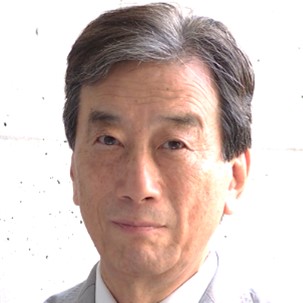 Dr. Kiyoshi Kurokawa is a professor emeritus at the National Graduate Institute for Policy Studies (GRIPS), Member of World Dementia Council (WDC), International Scientific Advisory Committee (ISAC), and Harvard T.H. Chan School of Public Health, John B. Little (JBL) Center for Radiation Sciences. After graduating from the University of Tokyo Faculty of Medicine, he served as a professor at the School of Medicine of UCLA (1979–1984), University of Tokyo (1989–1996), the dean of Tokai University School of Medicine (1996–2002), the president of the Science Council of Japan (2003–2006), the science advisor to the Prime Minister (2006–2008), World Health Organization (WHO) commissioner (2005–2009), Chair and Representative Director of Global Health Innovative Technology (GHIT: 2013.1-2018.6) and the executive member of many other national and international professional societies. He was also the chairman of the Fukushima Nuclear Accident Independent Investigation Commission by the National Diet of Japan from December 2011 to July 2012.
Dr. Kiyoshi Kurokawa is a professor emeritus at the National Graduate Institute for Policy Studies (GRIPS), Member of World Dementia Council (WDC), International Scientific Advisory Committee (ISAC), and Harvard T.H. Chan School of Public Health, John B. Little (JBL) Center for Radiation Sciences. After graduating from the University of Tokyo Faculty of Medicine, he served as a professor at the School of Medicine of UCLA (1979–1984), University of Tokyo (1989–1996), the dean of Tokai University School of Medicine (1996–2002), the president of the Science Council of Japan (2003–2006), the science advisor to the Prime Minister (2006–2008), World Health Organization (WHO) commissioner (2005–2009), Chair and Representative Director of Global Health Innovative Technology (GHIT: 2013.1-2018.6) and the executive member of many other national and international professional societies. He was also the chairman of the Fukushima Nuclear Accident Independent Investigation Commission by the National Diet of Japan from December 2011 to July 2012.
Riko Kimoto (Manager for International Public Health, Governance &Sustainable Development Department)
 Riko Kimoto joined ASEF in April 2016. She leads ASEF Public Health Network from conceptualisation to implementation. Prior to joining ASEF, she gained extensive field NGO/volunteer experience in Latin America, collaborating with the local/international agencies such as the Ministry of Health and UNHCR, dealing with a wide range of issues in public health. Besides the Americas, she also worked in Africa as a project supervisor for hospital management. Since she has lived much of her adult life in countries other than her own, including Haitian Batey (village) in the rural Dominican Republic, she became very capable of adapting to different cultures and lifestyles, which she enjoys a lot. Riko has a Bachelor of Nursing degree from Australian Catholic University, and she is a qualified nurse with several years of clinical experience. She then obtained her Master’s degree in International Public Health (MIPH) from the University of Queensland. For MIPH, she conducted her research in Mexico, and her article was published in a professional journal afterwards.
Riko Kimoto joined ASEF in April 2016. She leads ASEF Public Health Network from conceptualisation to implementation. Prior to joining ASEF, she gained extensive field NGO/volunteer experience in Latin America, collaborating with the local/international agencies such as the Ministry of Health and UNHCR, dealing with a wide range of issues in public health. Besides the Americas, she also worked in Africa as a project supervisor for hospital management. Since she has lived much of her adult life in countries other than her own, including Haitian Batey (village) in the rural Dominican Republic, she became very capable of adapting to different cultures and lifestyles, which she enjoys a lot. Riko has a Bachelor of Nursing degree from Australian Catholic University, and she is a qualified nurse with several years of clinical experience. She then obtained her Master’s degree in International Public Health (MIPH) from the University of Queensland. For MIPH, she conducted her research in Mexico, and her article was published in a professional journal afterwards.
Yui Kohno (Manager, Health and Global Policy Institute)
 Ms. Yui Kohno is a graduate of the University of Sydney School of Public Health’s Faculty of Medicine and Health in Australia. After obtaining a Master of Health Policy degree from the University of Sydney, Ms. Kohno joined Health and Global Policy Institute. There, she is responsible for research and analysis of national and global policy challenges within and beyond the fields of Antimicrobial Resistance (AMR) and vaccination. Her activities include planning and coordinating conferences for better policy dialogue and discussion and engaging in public relations, outreach, and advocacy activities.
Ms. Yui Kohno is a graduate of the University of Sydney School of Public Health’s Faculty of Medicine and Health in Australia. After obtaining a Master of Health Policy degree from the University of Sydney, Ms. Kohno joined Health and Global Policy Institute. There, she is responsible for research and analysis of national and global policy challenges within and beyond the fields of Antimicrobial Resistance (AMR) and vaccination. Her activities include planning and coordinating conferences for better policy dialogue and discussion and engaging in public relations, outreach, and advocacy activities.
Top Research & Recommendations Posts
- [Research Report] Perceptions, Knowledge, Actions and Perspectives of Healthcare Organizations in Japan in Relation to Climate Change and Health: A Cross-Sectional Study (November 13, 2025)
- [Research Report] The 2025 Public Opinion Survey on Healthcare in Japan (March 17, 2025)
- [Policy Recommendations] Developing a National Health and Climate Strategy for Japan (June 26, 2024)
- [Policy Recommendations] Mental Health Project: Recommendations on Three Issues in the Area of Mental Health (July 4, 2025)
- [Research Report] The 2023 Public Opinion Survey on Satisfaction in Healthcare in Japan and Healthcare Applications of Generative AI (January 11, 2024)
- [Research Report] Survey of Japanese Nursing Professionals Regarding Climate Change and Health (Final Version) (November 14, 2024)
- [Policy Recommendations] Reshaping Japan’s Immunization Policy for Life Course Coverage and Vaccine Equity: Challenges and Prospects for an Era of Prevention and Health Promotion (April 25, 2025)
- [Announcement] HGPI Endorses the “Belém Health Action Plan” (November 14, 2025)
- [Publication Report] Planetary Health Promotion Project “Issues Facing Planetary Health and the Role of the Health Sector” (May 10, 2023)
- [Policy Recommendations] Recommendations on Strategic Investments in Policies for Brain Health to Revitalize Japan: Hopes for the New Administration (December 1, 2025)
Featured Posts
-
2025-12-01
[Policy Recommendations] Recommendations on Strategic Investments in Policies for Brain Health to Revitalize Japan: Hopes for the New Administration (December 1, 2025)
![[Policy Recommendations] Recommendations on Strategic Investments in Policies for Brain Health to Revitalize Japan: Hopes for the New Administration (December 1, 2025)](https://hgpi.org/en/wp-content/uploads/sites/2/HGPI_20251201_Recommendations-on-Strategic-Investments-in-Policies-for-Brain-Health.png)
-
2025-12-09
[HGPI Policy Column] (No.66) — From the Planetary Health Project “Part 16: The Global Plastics Treaty: Discourse on Human Health in International Environmental Law”
![[HGPI Policy Column] (No.66) — From the Planetary Health Project “Part 16: The Global Plastics Treaty: Discourse on Human Health in International Environmental Law”](https://hgpi.org/en/wp-content/uploads/sites/2/HGPI_20251208_PlasticsTreaty.png)
-
2025-12-09
[Event Report] Special Seminar “Rising to New Challenges in Health Sciences for Future Society: Novel Developments in the Field of Epilepsy in Japan and Globally” Belgium Pavilion Special Seminar, World Expo 2025 Osaka, Kansai (September 18, 2025)
![[Event Report] Special Seminar “Rising to New Challenges in Health Sciences for Future Society: Novel Developments in the Field of Epilepsy in Japan and Globally” Belgium Pavilion Special Seminar, World Expo 2025 Osaka, Kansai (September 18, 2025)](https://hgpi.org/en/wp-content/uploads/sites/2/HGPI_20250805_mental-health-expo-eyechatch.png)

